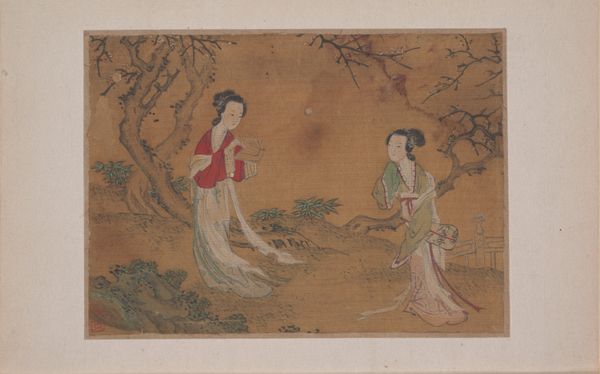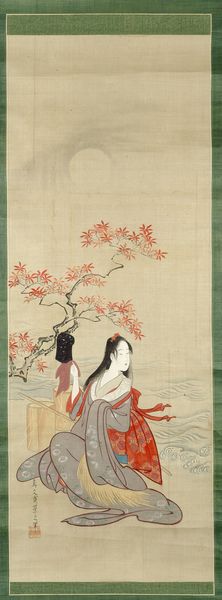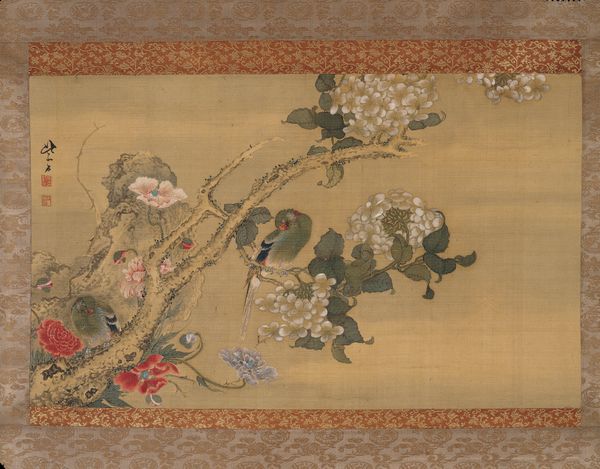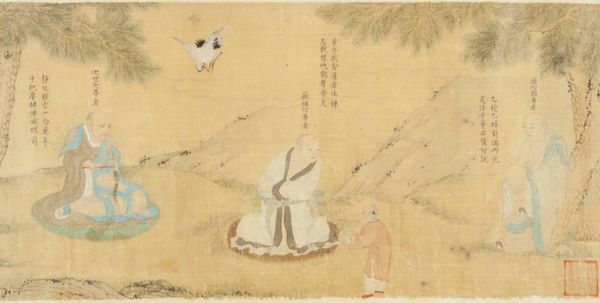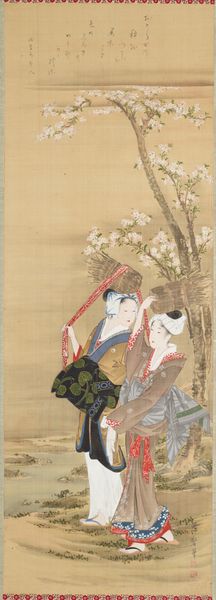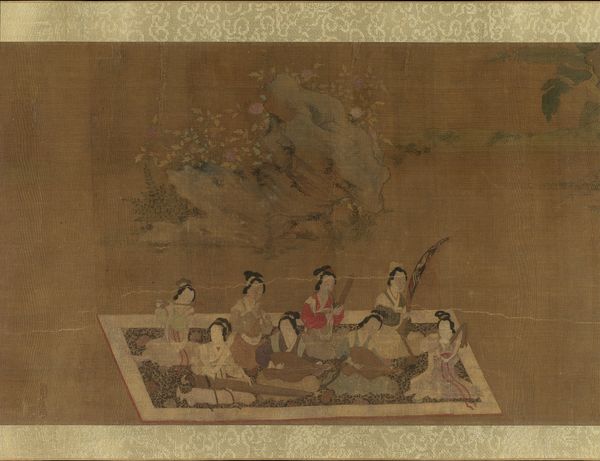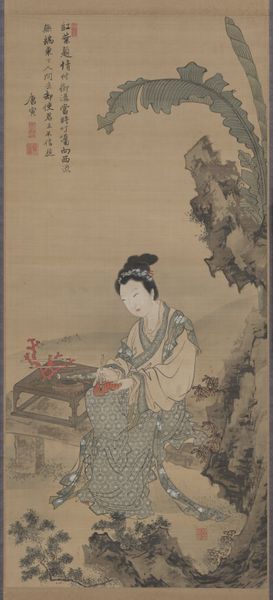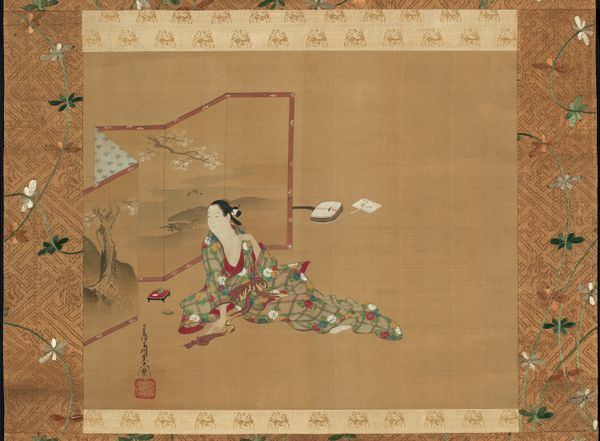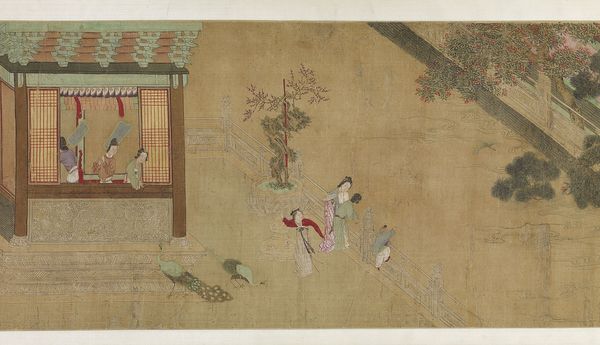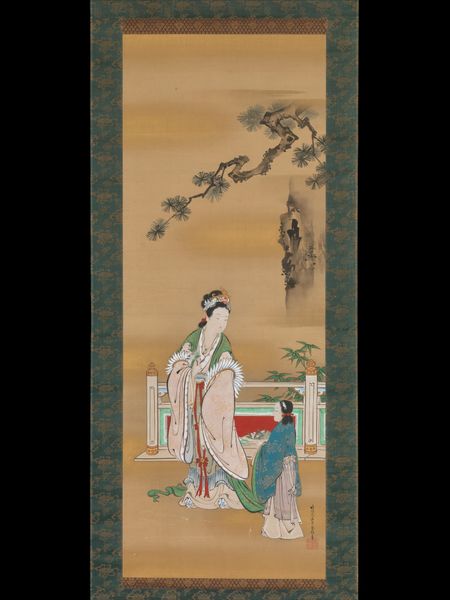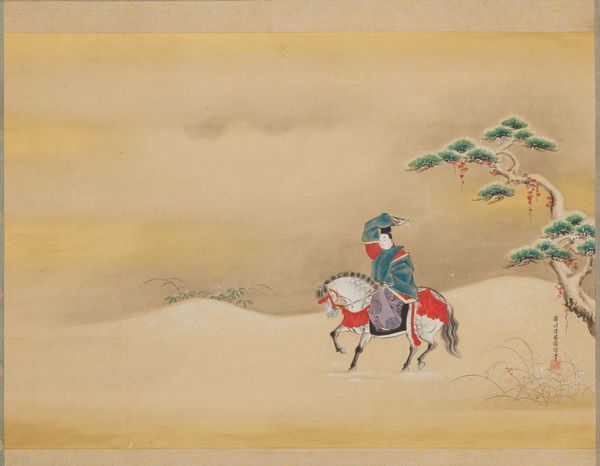
painting, watercolor
#
portrait
#
water colours
#
painting
#
asian-art
#
landscape
#
ukiyo-e
#
watercolor
#
genre-painting
#
watercolor
Dimensions: 14 9/16 × 22 7/8 in. (36.99 × 58.1 cm) (image)
Copyright: Public Domain
Editor: This is *Poetess Ise no Tayū*, a painting by Miyagawa Chōshun from around the 18th century. It looks like it’s made with watercolors. I’m struck by the delicate balance between the figure and the natural elements. How do you see the artist's choices relating to material and context influencing the meaning of the artwork? Curator: I see this not just as a pretty picture of a poet, but as a complex document of artistic labor and material consumption within the Edo period. The creation of this painting relied on specific materials – paper, pigments, brushes – each sourced and produced through different labor practices. Consider the watercolor: how did its availability shape artistic expression and skill development? Editor: That’s a fascinating way to look at it. So, it’s less about the idealized image of the poetess and more about the physical processes behind the work? Curator: Precisely. Ukiyo-e wasn't just about depicting "the floating world" – it involved block carvers, printers, and publishers, a whole commercial apparatus! The availability, and cost, of certain pigments likely influenced Chōshun's color choices and his painting practice. How does the physical reality of creating the piece reflect the social realities of 18th-century Japan? Think of it less like the individual genius of Chōshun, but instead how material conditions made the piece possible. Editor: That makes so much sense. So, the artist wasn’t just creating art, but engaging with a whole network of material production and consumption. Curator: Absolutely. Examining these connections breaks down that division between "high art" and everyday craft, because what IS the difference here, right? Now look at the materiality again. How can studying what survives – and doesn’t – allow us to understand the processes of artistic creation during this period? Editor: Looking at it now, the whole commercial aspect adds so many layers of complexity to what seems, at first glance, like just a beautiful painting. I hadn’t considered the social implications of each pigment used. Thank you! Curator: The beauty of materialist art history! Now go forth and question those precious labels!
Comments
minneapolisinstituteofart almost 2 years ago
⋮
A lady with long, open black hair in classical court attire from the 11th century is standing under a cherry tree, with her sleeve raised to her mouth. These visual elements suggest that she is Ise no Tayū, a famous poet who is one of the late classical Thirty-Six Immortal Poets. Miyagawa Chōshun was an ukiyo-e artist who specialized in painting rather than woodblock prints. Chōshun was renowned for his delicate style and ability to depict figures that seem to interact in a natural and convincing manner.
Join the conversation
Join millions of artists and users on Artera today and experience the ultimate creative platform.

